In our first Spotlight Interview of 2023, Claudia Rueda talks to us about her work with PEN, Domestika, some of her early literary influences, and changing the world through children’s picture books.
CLAUDIA RUEDA – WRITING FOR YOUNG PEOPLE, JANUARY 2010
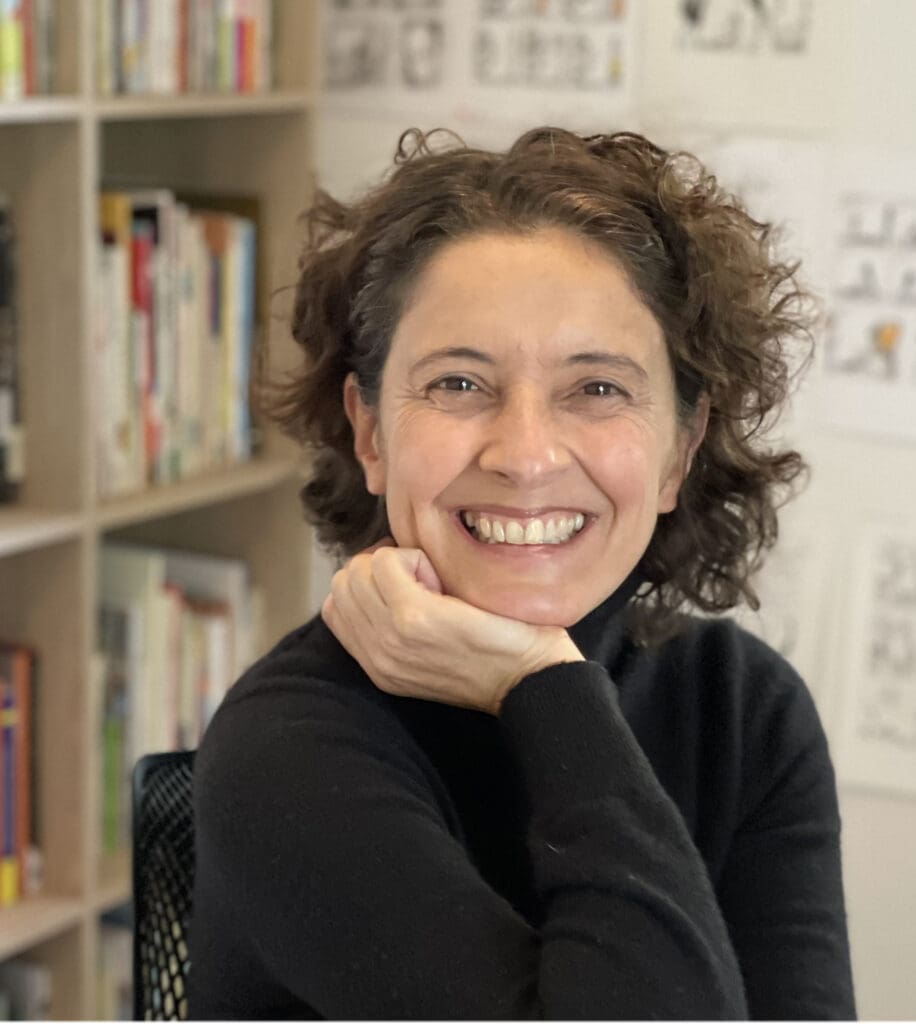
CLAUDIA RUEDA is a Colombian author and a New York Times Best Seller illustrator of over thirty picture books. Rueda’s books have been published in the United States, Mexico and Spain and have been translated into fifteen different languages for Asia and Europe. She’s a 2016 Hans Christian Andersen and Astrid Lindgren Awards nominee.
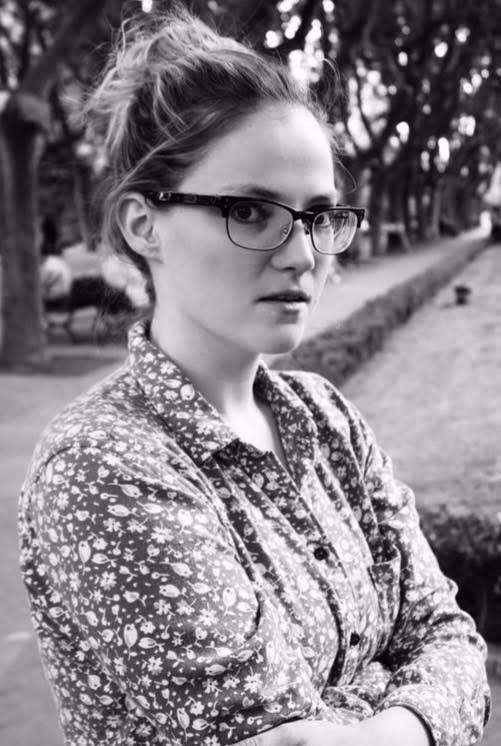
Interview By
Erin FM
Erin FM: Thank you so much for sitting down with me.
Claudia Rueda: No, you’re welcome.
EFM: So I heard you had something coming up in March? What was that?
CR: Oh, I’m teaching a class in March, and I’m going to be busy, and I’m also traveling to Mexico to give a talk: it’s going to be a busy month!
EFM: Is the class that you’re teaching in March through the MFA program that you work at in Colombia?
CR: No, no, this is going to be here in New York City and is connected to an organization for free speech, and they have a very interesting program with immigrants. People who are in this program are undocumented immigrants in New York City; they bring them into the school system, and they are now in CUNY Colleges. And this is a program for emerging writers, and they teach workshops. And I’m gonna teach one of those workshops during the months of April and March to help them write their stories of immigration.
EFM: Oh, that’s amazing.
CR: Yeah, I sent them a proposal, since I knew I was going to be here in New York City for the year, hopefully two years. And so, I propose them to give a picture book class. Sometimes it’s easier with pictures to tell stories that are difficult to tell.
EFM: And what is the name of that organization?
CR: It’s called PEN. It’s more than 100 years old. The program is called “Dreaming Out Loud.”
EFM: Along similar lines, I saw that you also have designed a whole Domestika course. For our readers who might not know, Domestika is a platform that is arts and handicrafts centered. And it is international and affordable and accessible for people. Can you speak on that a little bit?
CR: Of course. I’m totally for the real-life classes, for teaching in person. And I love the idea of being together in a place, but when they reached [out to] me, I thought it was going to be very interesting because it was an opportunity to get the workshop that I’ve been working on for 10 years–that I’ve been designing for 10 years, for it to be on some kind of platform that will last forever. And they were very professional in the way they designed the class and how they allowed me to create it the way I wanted to do it. And this workshop–it’s totally about planning the book, not as a finished piece, but sketching from the beginning how to think of the picture book–how to think and how to write, how to sketch the pictures, and how to write with pictures from the beginning […] how to do a storyboard, and how to create a dummy. It’s not about the illustration or decorating the book, none of that. It’s about the first idea for the book and how to make it real. So it’s been great. It’s got more than 6,000 students. That’s another beautiful thing about this class and about internet in general. Right? You can reach many people from very different parts of the world. It’s amazing.
EFM: And maybe people who wouldn’t be able to do an MFA program.
CR: Totally, totally, and it’s like from 80 different countries. At the beginning I would be able to look at the projects and send comments. Of course with 6,000, it’s impossible to follow up. But the first 100 were the fortunate ones. The early bird gets the worm, right? It was a great experience, and they pay you royalties from the registration, but it’s very affordable. And it was very well done. And we did it during the lockdown, which was another special thing.
EFM: What advice do you have for current MFA students or less experienced writers about getting to your level?
CR: Let’s begin with one that might liberate you from the chains of perfectionism: your first draft will never be very good and will never be your final work. It’s a draft. It will never be perfect. Read. Read a lot. But not only from the trends or the new books in the market. Go to your local library and look for books that have been there for more than a decade. Read about the lives of authors you like, how was their process and their struggle, what inspires them for their work? Practice your craft, but let playfulness be part of your everyday work. Do not lose your sense of humor.
EFM: You’ve taken active steps toward your career goals, like formal study, but what role has luck played in getting you where you are today?
CR: There is a quote (attributed to Seneca) that I really like: “Luck is what happens when preparation meets opportunity.” I always tell my students: show up every day and sooner or later the train of luck will pass. You cannot control luck. The thing you can control is discipline. Show up. It might take time, a lot of time. It often happens the day after you want to quit! So I always try to show up and things happen.
EFM: What is your earliest memory of being inspired by a story or a writer and has it subconsciously made its way into the kinds of stories you tell?
CR: I didn’t have access to a library or to many books as a child, but I remember very well a collection of the stories by Grimm and H.C. Andersen that we had at home. Also the stories for children by Oscar Wilde. Already as a teenager I became a cartoonist, and I would do a lot of research on graphic novels from France and Belgium (Enki Bilal, Hergé, Moebius). I also learned a lot from an Argentinian Graphic humorist called Quino. He was a genius.
EFM: I love that you said that one of the only children’s books you had was a collection of Hans Christian Andersen stories, and you’ve since been nominated for the Hans Christian Andersen Literature Award. So how does that journey feel for you?
CR: Isn’t that great? Life goes around. I mean, goes back to your roots, always.
EFM: Yeah, that’s amazing.
CR: And it’s so real and–so my parents were not big readers. But they had a subscription to this club. And they would send them a book–I don’t know–a month or a week or something. There was no Amazon of course at that time. So, in this collection there were two titles, or three titles under the same collection. And they have illustrations. And I remember them, there were not too many illustrations, but I remember them so clearly. It’s amazing. The advantages of the scarcity.
EFM: Yeah, absolutely.
CR: And, and I didn’t know about picture books for a long time, but I was always aware of art and the history of art and I loved it.
EFM: Yeah, you studied art. You studied art, and you also studied law.
CR: Isn’t that crazy? Yeah. I didn’t know what to do. I mean, I had too many things to do. I thought that I didn’t know what to do, but my emphasis on writing with pictures is important because I didn’t want pictures to just–be only for the aesthetic purpose, because I always have seen things. I like to see things and the way to go. […] I really wanted to change the world. I wanted things to be better for the world. So I said, “Okay, maybe I will go to law school, which is funny.”
EFM: Well, I mean, I feel like the fact that you’ve been to law school–you also used to do political cartoons. That’s one way to change the world. But what made you want to focus your talents on younger audiences and change the world that way?
CR: Yes, there’s a very deep reason for that. And it’s clear in my mind. After doing political cartoons for years–and I was doing really well: I was publishing my political cartoons in the main newspaper in Colombia–the largest one–and I was doing well. I got this award for my work that is given to journalists and all that. But to realize that cartoons, especially political—not the New Yorker types, but these ones that relate to the news—they get old very quickly. Like you know? And after a couple of days you you’re not able to understand them. It’s just for the moment. Although it’s important, and I like them, I love what I did. I want it to last longer, and I want it to go further, and that’s when I well…we decided, my husband and I, to go to live in San Francisco, to learn about computer graphics.
And I found this children’s book illustration class, and I decided, “Okay, I have some time. And I’m going to take the class.” And I realized that stories and storytelling are what make people change. And much more than the political commentaries that you can bring in the cartoons–although it was a great school for me to learn how to say things with pictures, and how to get like, the combination of subtle text, a very clear picture that you can read. And when you combine it, you get the point, and that’s very important. That was very good training. I would do one cartoon every single day. Not all of them get published, but you do one or two every single day for five years. That’s a lot of training, thinking–and it’s just got to be ready the next day.
So that was very useful, but I wanted something that will last longer. And that would go deeper into people’s minds. And when I saw this form that had pictures and words and stories, and it was for children, I thought, “Okay, this is a good way to go because there are things to do.” Like, further in life, I’ve been–well, with my own kids, I get very interested in education and, of course, although they are not education, their stories meet the imagination and that’s what makes us humans. Otherwise, without the stories we will be only animals. So stories are what make us human, and there are very good stories and very bad stories.
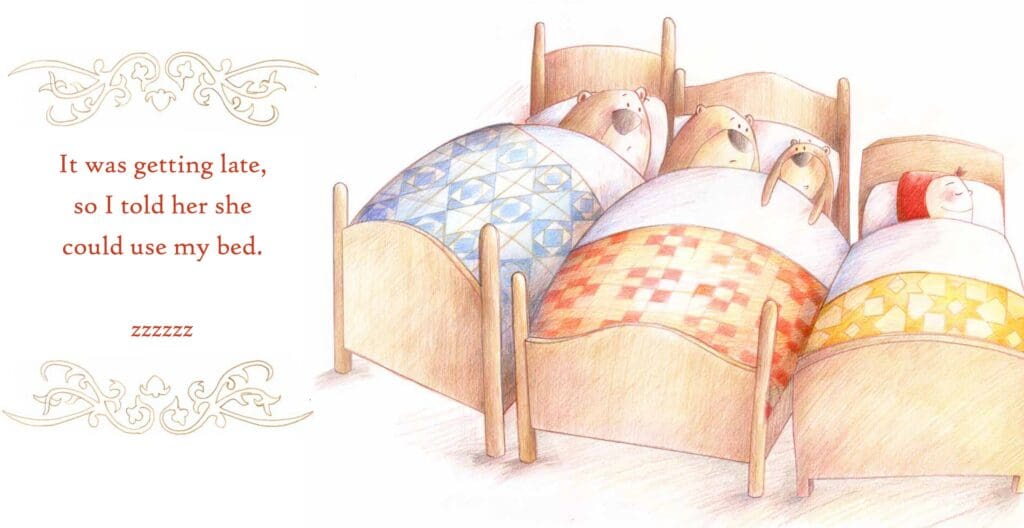
EFM: You do so many things! When people ask you what you do, how do you respond?
CR: I call myself a picture book author and not an author-illustrator. Which means I do not write a text and then create illustrations that will expand, explain or decorate the meaning of the words. What I do is that I write both with pictures and words. Both languages interact in order to create the story. The meaning only happens when you put them together. I love the possibilities of meaning that both languages combined can give you.
EFM: Do you have any tips for overcoming writers block?
CR: Get outside. Not only literally, which helps a lot, but also outside of your art form. Go for a walk in the city, go for a hike in the mountains, go to a classical music concert, watch a Shakespeare play, a good old movie, a Pink Panther animation clip, have an interesting conversation, go to a book launch. And then write.
EFM: Definitely. It sort of reminds me of Julia Cameron’s advice in The Artist’s Way where she says that you should take yourself on an “artist date.” And you just got me thinking that aside from the distraction of that–is there a part of it that has to do with going and doing something that we’re not expected to be excellent at?
CR: Wow. Wow, that’s a good one. I hadn’t thought about it, but that’s a good one. Probably. Your ego is not involved in it. And you can look at you in the picture. You’re in the picture. And you can see more clearly—it’s like traveling. Like when you are walking around your own city, you only see the bad things. That was happening to me in my hometown. When I was living in Colombia, I will only look for the problems–like with your own family. So when you go to another genre, you go fresh. You don’t think, “Oh I should have done it that way,” or “He’s better, or she is better than me.” You just go fresh. But also it allows you to see the story behind, and because it’s so familiar to you, you can see more clearly in a way. It’s strange but yes, yes. That’s real. And it works. It works a lot.
EFM: I agree. 100%. Do you have an agent? If so, what is that relationship like?
CR: Yes. I have a wonderful agent. Her name is Janna Morishima. The creative practice is a lonely practice and sometimes you need to have a conversation over your work that will give you perspective. You often get lost in your work and at some point you have no idea if what you’re doing makes sense at all. I worked on my own for many years and I would hold that conversation with my editors. And that was great. But nowadays it’s more difficult to do that at the early stages of your work. So your agent becomes not only the person who submits your work to publishers, but also your first reader, and that is crucial. You must look for that first reader and it should be someone you trust, but also someone whose opinion on the craft you respect.
EFM: Well, thank you so much for joining me, and thank you for sharing such an amazing balance of the artistry behind it but also the practical business side, because you are such a successful working artist.
CR: Thanks for inviting me. It’s so good that you’re doing this. I mean, it’s so good to hear from authors. And you’re doing a great job by reaching out for people who have been in the program and to talk to the students and give them any piece of advice that might encourage them to keep going because this is not easy. Like there are so many other more attractive things to do related with money that this–this requires a lot of perseverance. So congratulations for doing this and for inspiring people.
Claudia’s most recent releases are Goldilocks and the Three Bears (Chronicle Books, 2021) and a book she published in Spanish called El Encargo (Oceano, 2021). She has three new books coming out in the US in 2024 and 2025.
Listen to Claudia read an excerpt from her 2020 picture book, Bunny Overboard.

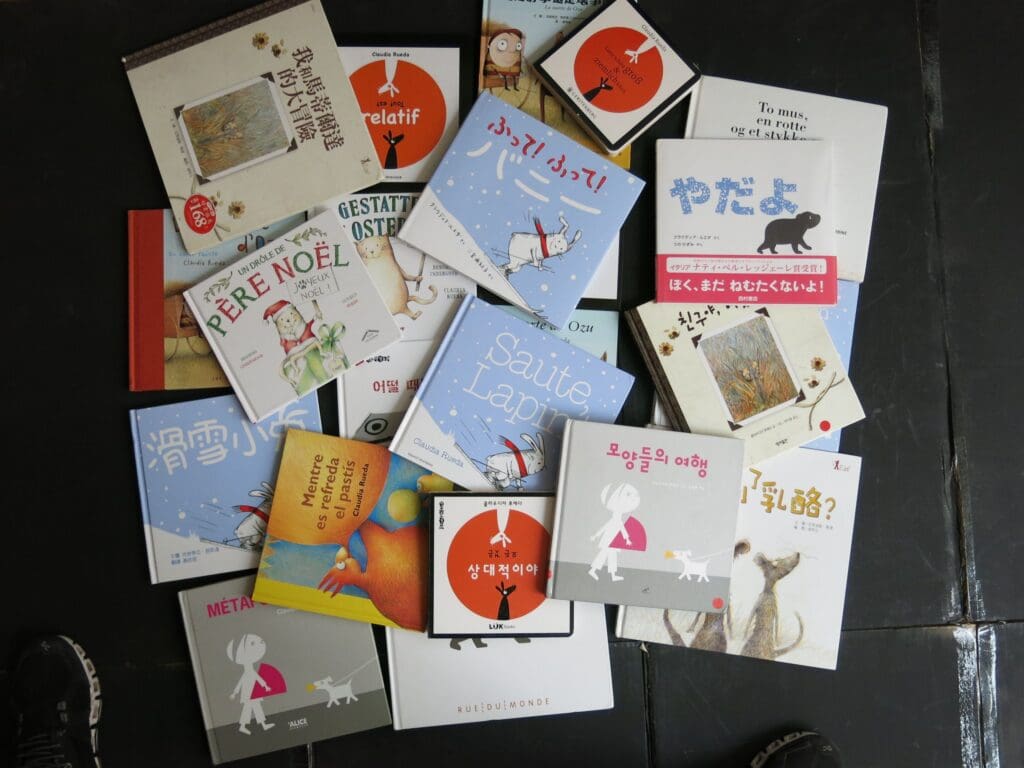
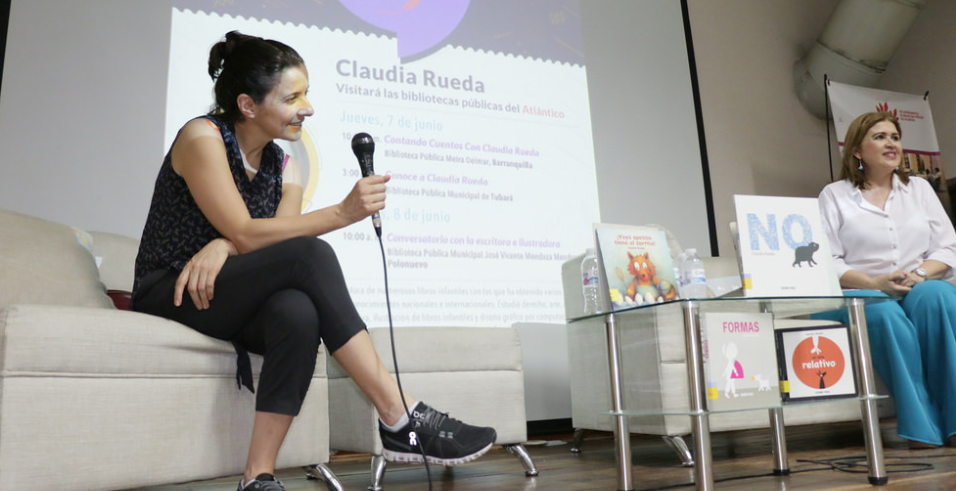
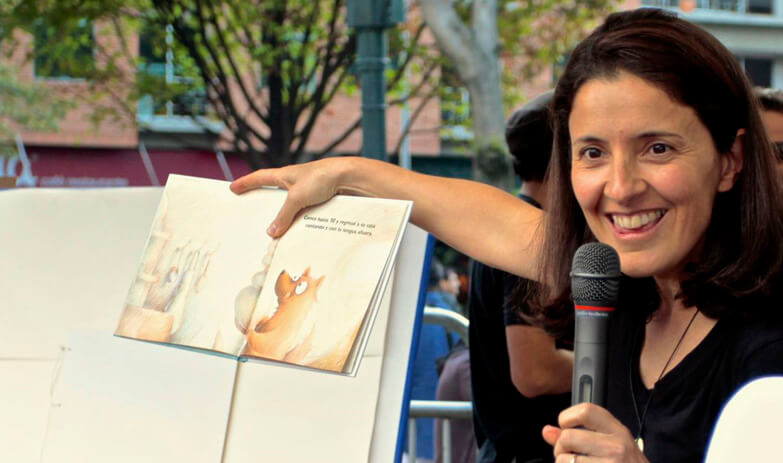
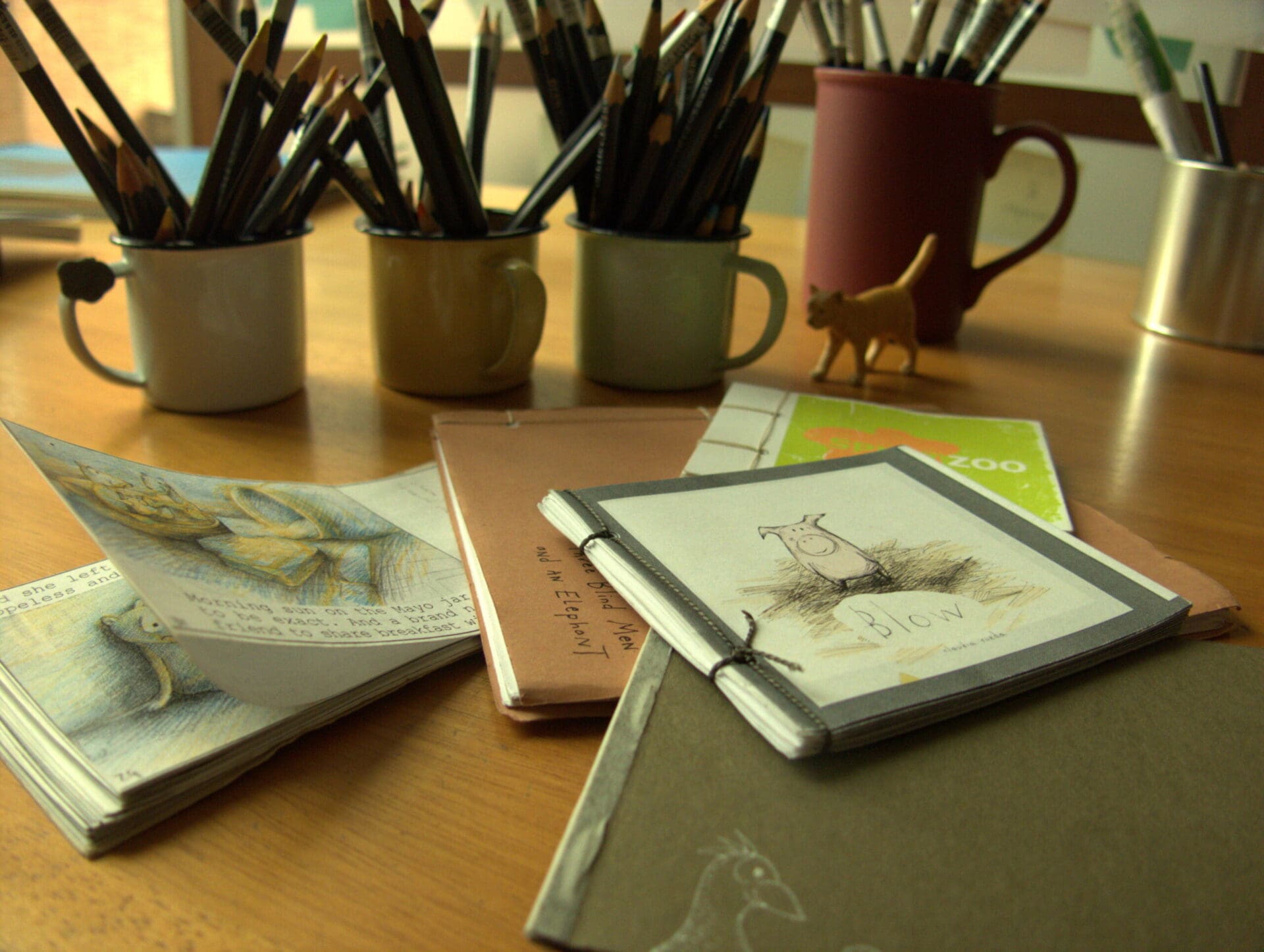
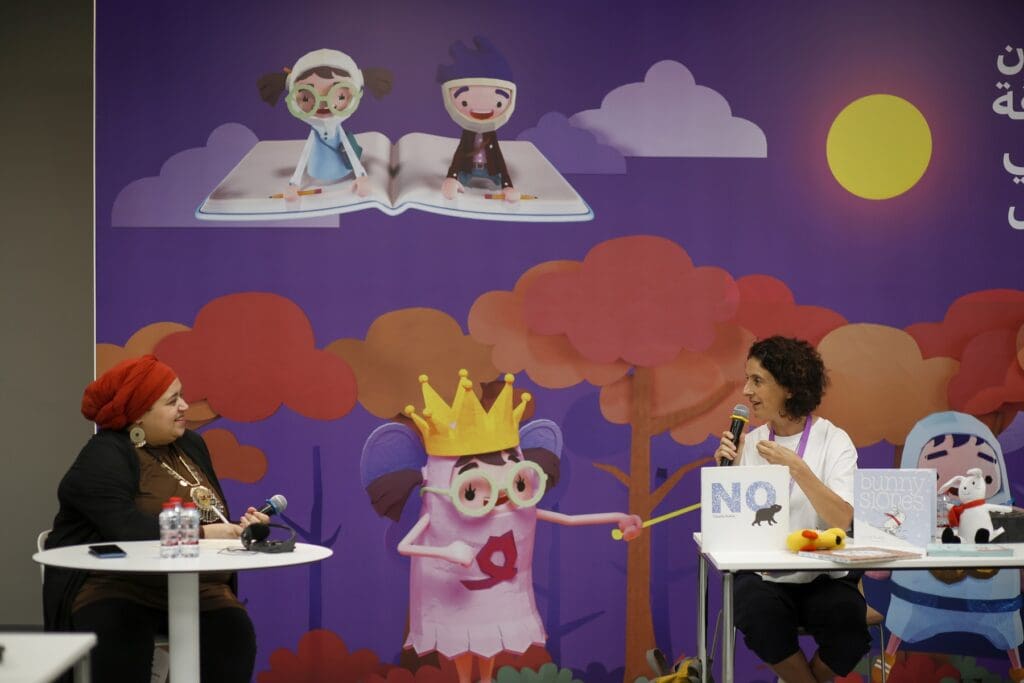
Comments are closed